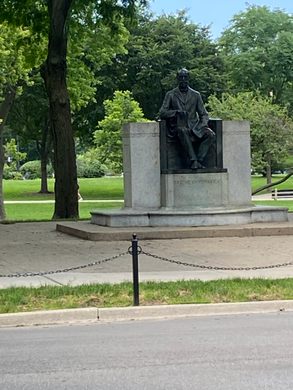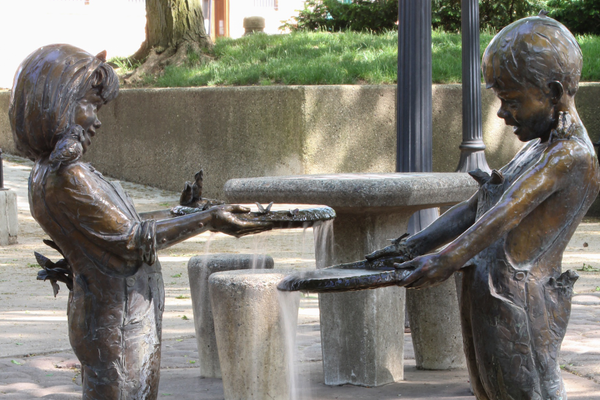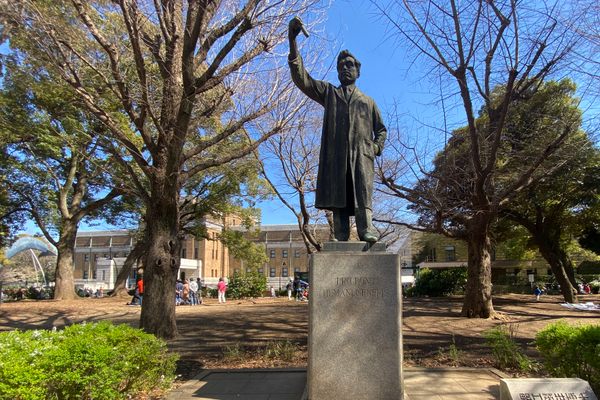The Grand Old Man of Dentistry
G.V. Black, the Father of Modern Dentistry, keeps an eternal eye on Chicagoan’s teeth from his perch in Lincoln Park.
Green Vardiman Black, known to friends and colleagues as G.V., really was a giant in the creation of modern dentistry. In addition to setting the standards for preparing cavities, he wrote the first textbook on human dental anatomy, was the second dean of Northwestern’s old dental school, and many of his innovations have still stood the toothy test of time.
Black had little time for school as a kid, preferring to wander the woods, when he wasn’t being called into service on the family farm in Winchester, Illinois. But along the way, Black’s love of the natural world got under his skin enough that he joined his brother’s medical practice as a kind of apprentice, soaking up everything he could about anatomy and medicine. He turned to dentistry, bucking the trends of his day to treat teeth as simple mechanical objects for chewing, and instead seeing them as a gateway to overall health – and in the process, elevating dentistry to an art and practice of skill that he saw as second to no other area of medicine.
During the Civil War, Black took a little break in his training to join the Union Army as a scout. After his military service and back to teeth, he codified dental terminology, invented new types of instrumentation, established methods of treatment and prevention, and created compound formulas that have endured relatively intact to this day. And always a well-rounded naturalist and man of letters, he found time to travel extensively, played several musical instruments, was an accomplished sailor, and with book titles to his credit like Formation of Poisons by MicroOrganisms and The Periosteum and the Peridental Membrane (dental page-turners in their time), he still managed to find some spare time to put pen to paper.
The inscription on Black’s statue reads “Born on the prairies of Central Illinois; self-educated, he became in his profession the foremost scientific investigator, writer and teacher of his time.” Sunbathers and dog walkers may wonder, as they stop to read the inscription, why anyone would put a statue of a sad-eyed dentist in Lincoln Park? If they only knew…
Know Before You Go
On the south edge of Lincoln Park, after North Avenue becomes North Boulevard
Community Contributors
Added by
The Atlas Obscura Podcast is Back!
























Follow us on Twitter to get the latest on the world's hidden wonders.
Like us on Facebook to get the latest on the world's hidden wonders.
Follow us on Twitter Like us on Facebook